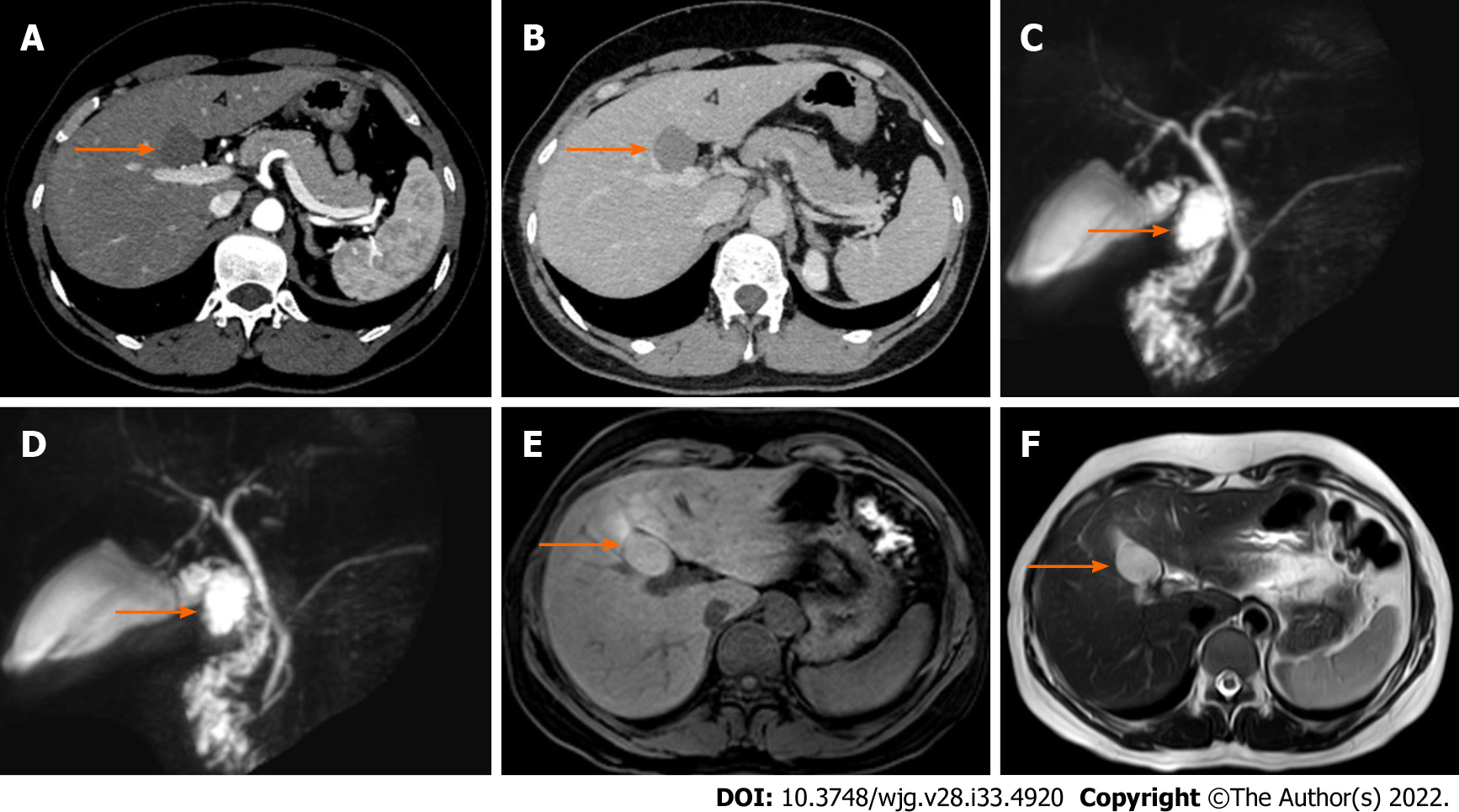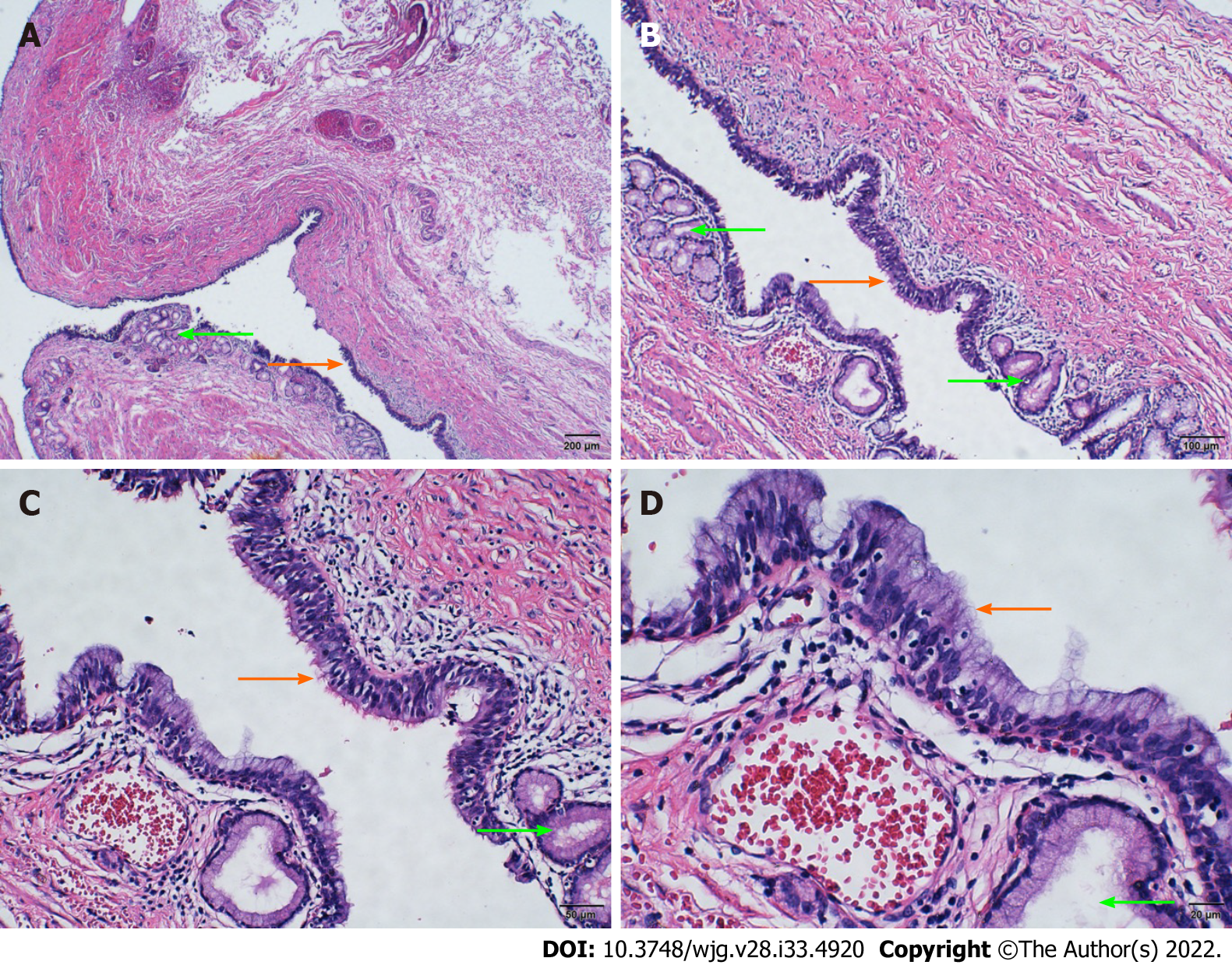Copyright
©The Author(s) 2022.
World J Gastroenterol. Sep 7, 2022; 28(33): 4920-4925
Published online Sep 7, 2022. doi: 10.3748/wjg.v28.i33.4920
Published online Sep 7, 2022. doi: 10.3748/wjg.v28.i33.4920
Figure 1 Ectopic bronchogenic cyst in a 40-year-old woman.
The location of the cyst is indicated by an orange arrow. Magnetic resonance cholangiopancreatography (MRCP) showed that the cyst was locally connected to the cystic duct. A: Hepatobiliary and pancreatic enhanced computed tomography (CT) arterial phase; B: Hepatobiliary and pancreatic enhanced CT venous phase; C and D: MRCP; E: T1-weighted imaging showed a slightly high signal shadow; F: T2-weighted imaging showed a high signal shadow.
Figure 2 Gross examination of the surgically excised ectopic bronchogenic cyst.
A: The gallbladder and cyst were removed under laparoscopy, revealing the smooth wound surface (orange arrow) connecting the cyst and liver; B: The inner wall of the cyst. The cyst contained light yellow turbid liquid; C: The cyst was connected to the gallbladder via a pedicle; D: Inner wall of the cyst.
Figure 3 Histopathologic examination by hematoxylin and eosin staining.
The cyst wall was fibrous and muscle tissue was visible. The mucosal epithelium of the inner surface of the cyst wall was partially detached, and the remaining inner surface was partly lined with pseudostratified ciliated columnar epithelium (orange arrow) and mucous epithelium. Serous and mucous glands were observed in the lamina propria (green arrow). A: 4 ×; B: 10 ×; C: 20 ×; D: 40 ×.
- Citation: Dong CJ, Yang RM, Wang QL, Wu QY, Yang DJ, Kong DC, Zhang P. Ectopic bronchogenic cyst of liver misdiagnosed as gallbladder diverticulum: A case report. World J Gastroenterol 2022; 28(33): 4920-4925
- URL: https://www.wjgnet.com/1007-9327/full/v28/i33/4920.htm
- DOI: https://dx.doi.org/10.3748/wjg.v28.i33.4920











